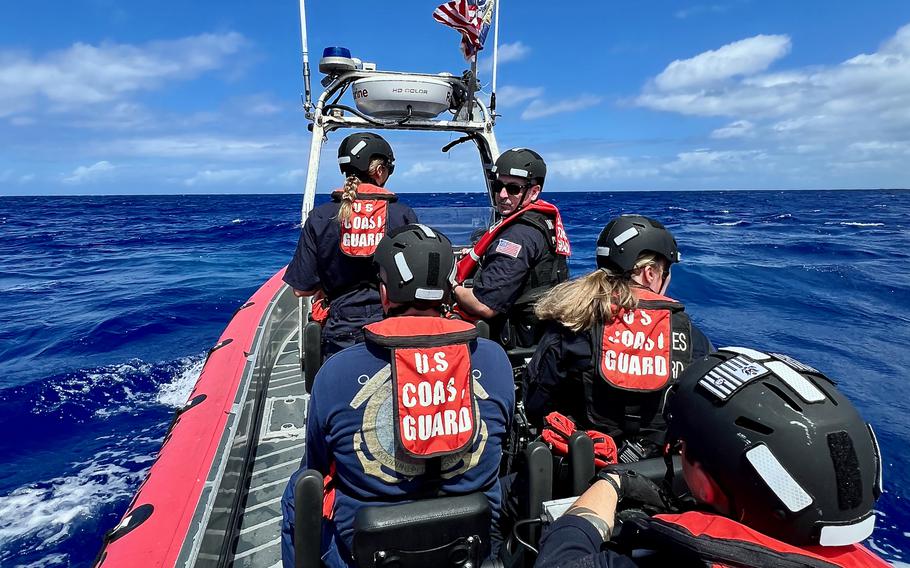
The crew of the U.S. Coast Guard cutter Myrtle Hazard operate near Guam on Feb. 12, 2025. (Peyton Phillips/U.S. Coast Guard)
The U.S. Coast Guard rescued two missing mariners Friday after three days of searching thanks to the men’s emergency beacon, according to Coast Guard Forces Micronesia/Sector Guam.
The mariners were found about 140 miles west of Guam; they showed no apparent injuries, dehydration or illness, Sector Guam spokeswoman Chief Warrant Officer 2 Sara Muir told Stars and Stripes by phone Friday.
A U.S. Navy MH-60 Knighthawk crew from Helicopter Sea Combat Squadron 25 airlifted one of the mariners, while the other remained to assist the Coast Guard with towing their vessel. The airlifted man was the least experienced of the two, Muir said.
The Coast Guard cutter Myrtle Hazard was on scene with the mariner and his boat, the 47-foot supply vessel Lucky Harvest, as of 4 p.m. Friday, Muir said.
“We’ll get him a hot shower and a hot meal,” she said, adding that the vessel would soon be returned to Guam or Saipan.
“We are relieved to have located the Lucky Harvest and to have one mariner safely rescued,” Cmdr. Patton Epperson, search and rescue mission coordinator, said in a Friday news release. “Our focus now is on ensuring the safety of the second mariner and securing the vessel, and we’re deeply grateful for the swift response of our Navy partners and the ongoing support from all involved.”
Muir was unable to provide identifying information for the two men, but she did say the man who remained aboard the vessel was well-known in Saipan.
The Coast Guard, Navy and first responders had searched since Monday for the men who failed to make their scheduled return to Saipan that night.
Extensive searches from participating agencies came up empty handed until the mariners activated their emergency locator beacon on Friday. The ship had suffered an electrical failure, Muir said, but it wasn’t clear how long they were drifting or if it affected their beacon.
Once activated, the beacon allowed a Coast Guard C-130 search-and-rescue aircraft to zero in on their position and verify they were safe while relaying their location to the helicopter and the Myrtle Hazard, Muir said.
“The beacon was really essential in this case,” she added. “We definitely advocate for folks that are operating in our austere and remote environment to have these — they were located at the edge of our search area.”